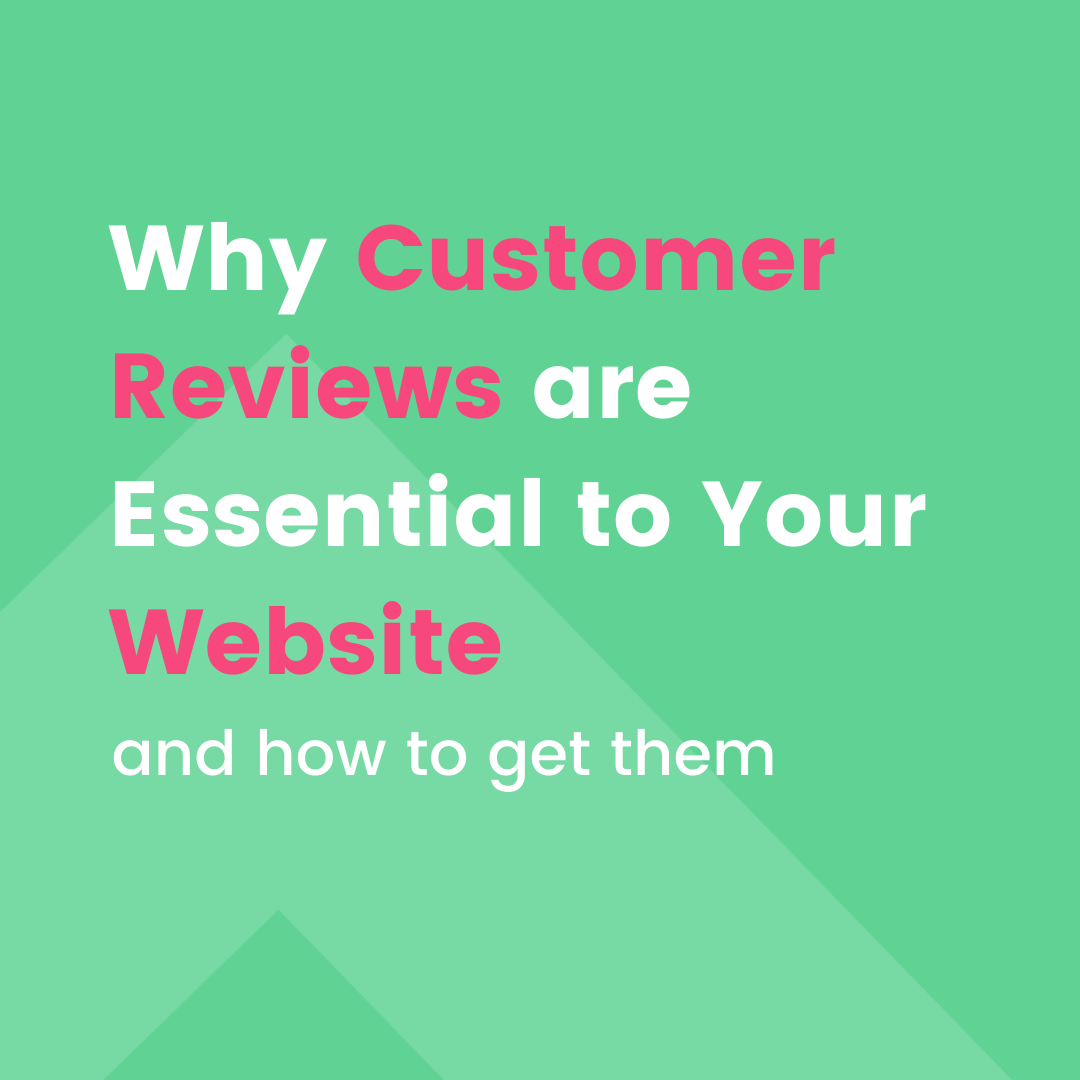In the words of the immortal Robin S., ‘words are so easy to say…you’ve got to show me love’. If you ignore the rest of the lyrics, she was definitely talking about websites. Specifically, why you need to show off that customer love. Let’s take a look at why customer reviews are so important, and then we’ll share some top tips to get your customers talking.
Why does my website need customer reviews?
Trust
No-one likes a shifty website. According to research commissioned by Trustpilot, 89% of purchases worldwide are made with the aid of online reviews, and 49% of consumers rank positive reviews as one of the three most important factors in any purchase decision.
It’s a well-known psychological effect, beloved of marketers everywhere, called social proof. If you see other individuals take a course of action, you’re more likely to take it yourself. If you can show examples of happy customers, your website users are much more likely to trust you.
And that goes double for e-commerce brands, who are under even more pressure to demonstrate their trustworthiness – as an online business, you’ve got even less options for persuading people to give you their hard-earned pay.
Show your customers how much they mean to you
Businesses tell you how important you are all the time – usually while you’re listening to the hold music, while they deal with the same ‘unprecedented number of calls’ they’ve been dealing with for the past three years (how long does it take to set precedent for these people?)
When they put your smiling face front and centre on their website, explaining why their product is actually useful, you can sort of believe them though. It’s nice to be appreciated – and for smaller businesses, there’s often a face-to-face relationship between vendor and customer that’s just going to get even warmer and fuzzier when that website review goes up.
Celebrate your customers on your website, and watch them turn into brand ambassadors, spreading the good word far and wide.
Increased page engagement and dwell time is good for SEO (probably)
As we explained earlier, people want and need that website review to help them decide whether to buy. They’re going to stop that little bit longer just to find out what Harriet from Barnstaple thought about your service. That engagement will increase if there’s a few more reviews to read. And if you get a headshot to go with the review, the brain’s hardwired response to human faces makes it even harder for website users to click away.
As well as keeping your audience connected with your brand that little bit longer, there is strong correlative evidence to suggest that page engagement and bounce rates are a ranking factor for Google and other search engines.
So if people hang around longer on your site, Google’s going to push you further up the page (probably – like we say, it’s based on correlative evidence, like many SEO recommendations. Our Leeds digital marketing agency is a certified Google Partner, but that doesn’t mean John Mueller’s sharing his secret sauce recipe with us anytime soon).
Brand association, through review widgets
We work closely with our web design clients to make sure they love every aspect of their new site. Increasingly, we’re finding that our clients want customer reviews to be drawn down from other platforms, and embedded in their site using a review widget.
It doesn’t suit every site, or every client. But in the right place, it can be hugely effective. It provides a double blast of social proof (a bona fide, independently verifiable review) along with visual content and brand association from some of the most meticulously designed user interfaces on the planet (Google, FB, etc). It works in the same way as a Trustpilot badge, or all the ‘registered member/associate’ badges you see displayed in the footer of a lot of websites.
Reviews can be repurposed elsewhere
Those kind words belong to you now, my friend (assuming you’ve asked for permission, and not accidentally sent their precious order to Campeche instead). You can repurpose that social proof to your heart’s content – in email campaigns, on banner ads, social media brags, turn it into a lullaby and sing your kids to sleep. Knock yourself out.
So now you know why you need reviews. But what’s the best way to get them?
The first thing to recognise here is that not every customer is going to give you a review. It’s estimated that at least 36% of customers just aren’t going to do it. They don’t want to. They’ve bought your product, and they don’t feel like they owe you anything else.
Mad Men Don Draper GIFfrom Mad Men GIFs
So if you’re going to ask for customer reviews, you need to keep in mind that you’ll meet with refusal and rejection. It’s not personal, and you can’t let it put you off. So with that in mind…
Automate your customer review process
You won’t get reviews if you don’t ask. And if you’re asking everyone, you’ll get better results if you do it systematically. If you’re taking payment online, automate a ‘thank you’ email that asks the customer to provide feedback.
You could also create a dedicated landing page and form on your website, or use a product like Zapier to generate user review tools at whatever stage of the buying journey you choose.
Respond to your reviews – especially the negative ones
The flipside of automating the process is that customers are usually able to distinguish an automated process, and will attach less importance to completing it as a result. You can make up for this by taking the time (or assigning a team member) to respond personally to each review. Your gratitude will be what the customer remembers most about the interaction.
And as for the negative reviews – remember the social proof we were discussing? Your negative reviews offer a great opportunity to display your honesty and vulnerability. No-one expects you to be perfect 100% of the time.
You can use your response to a negative review to demonstrate your commitment to customer service, and your ability to salvage potentially damaging situations (you probably don’t want to put these reviews on your website, although they might have potential for case studies or blog topics).
Make it easy to leave reviews, and ask at the right time
It’s all about how you ask. If you’re going to get all needy and ask for affirmation, you’ve got to make it convenient for the customer. ‘Leave us a review by clicking this link, going to this other website, then using the nav bar to find and download the form so you can tell us what you thought’ isn’t going to get you a lot of reviews (and you probably don’t want to read the reviews left by people who are prepared to do all that).
Find a way to make it easy – a quick email with an embedded form, or a website pop-up once the transaction’s complete should do the trick.
And you might find you get different results depending on when you ask. It’s good to ask when your product or service is fresh in their mind – but that might actually be weeks later, when they’ve received their purchase, and it’s doing a great job of solving their problem. Find the maximum enjoyment point, and aim for that (ahem).
Make it worth their while
Surely you’re realising by now how important this social proof stuff is? Well then, how much is it worth to you? Is there anything you could offer to the customer to make it a transaction?
For B2C businesses, offering a small discount off the next purchase will incentivise customers to leave reviews – and means you can increase your expectations of the depth of feedback requested. A longer form means you can encourage comments about specific aspects of your service, which can then be placed on the page of your website that deals with that service.
For B2B businesses, the incentive might be a prominent brand positioning on your website – the exposure could be useful if your customer is trying to raise brand awareness. It might be worth repurposing the review content as part of a more involved case study, in which case you can offer the customer a website link too, to boost their SEO.
Hopefully these tips have helped you figure out the best ways to winkle website reviews out of your tight-lipped customers. If not, drop us a message or ring us up, old school, at our Leeds digital marketing agency, and we can find the best way to get them singing your praises.



